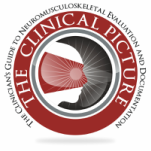Read what professors, physicians and students say about Dr. Conwell's videos...
This multi-sensory lecture series is presented by Dr. Timothy Conwell and is composed of three hour long videos covering the examinations of the central and peripheral nervous systems, as well as the musculoskeletal system.
Dr. Conwell uses both auditory and visual resources to present necessary components of examination of each system, while including interpersonal aspects such as his professional experience and preferences, which make the videos engaging and educational at the same time. Anatomy and physiology are incorporated with each step of examination, in addition to techniques, questions to ask the patient, differential diagnoses and guidelines for documentation.
His lecture style is conversational and each step of the exams are narrated and explained. Hearing the details and seeing the procedures executed simultaneously provides much more benefit, in my opinion as a medical student, than simply reading the material out of a textbook. These videos also display the important physician-patient interactions needed for adequate, professional and respectful exams. The pace of the videos is perfect for the topics included. It is not so slow that interest is lost but not so fast that important points are easily missed.
Two aspects of these videos stood out from others that I’ve viewed. The first is the inclusion of how to combine multiple exams into one short exam. For example, in the first lecture, the cranial nerves are tested in a very short time period. This is a useful tool for students who will be taking board exams and are concerned about time parameters. The second is the inclusion of documentation for each type of examination and their results. Many times, that aspect is not addressed in a clinical setting because we may simply check a box and move along. The addition of how to properly document each technique and result provides a more comprehensive lesson for future health care practitioners moving forward.
These videos would be a valuable asset to anyone pursuing a healthcare career, as complex material is simplified, organized and explained so that skills may be developed to perform efficient, accurate examinations.
Dr. Conwell uses both auditory and visual resources to present necessary components of examination of each system, while including interpersonal aspects such as his professional experience and preferences, which make the videos engaging and educational at the same time. Anatomy and physiology are incorporated with each step of examination, in addition to techniques, questions to ask the patient, differential diagnoses and guidelines for documentation.
His lecture style is conversational and each step of the exams are narrated and explained. Hearing the details and seeing the procedures executed simultaneously provides much more benefit, in my opinion as a medical student, than simply reading the material out of a textbook. These videos also display the important physician-patient interactions needed for adequate, professional and respectful exams. The pace of the videos is perfect for the topics included. It is not so slow that interest is lost but not so fast that important points are easily missed.
Two aspects of these videos stood out from others that I’ve viewed. The first is the inclusion of how to combine multiple exams into one short exam. For example, in the first lecture, the cranial nerves are tested in a very short time period. This is a useful tool for students who will be taking board exams and are concerned about time parameters. The second is the inclusion of documentation for each type of examination and their results. Many times, that aspect is not addressed in a clinical setting because we may simply check a box and move along. The addition of how to properly document each technique and result provides a more comprehensive lesson for future health care practitioners moving forward.
These videos would be a valuable asset to anyone pursuing a healthcare career, as complex material is simplified, organized and explained so that skills may be developed to perform efficient, accurate examinations.

Video & Book Reviews Section
Savoie Rating: 10 out of 10
Title: "Examination of the Neurological and Musculoskeletal System"
Author: Timothy D. Conwell, DC, DABCO, FICC
Publisher: Clinical Advancement Plus Seminars
Category: Doctor Education Publication: Three-part video tape, 60 minutes each
This is a three-part video program detailing the examination of the neuromusculoskeletal system. The program is presented by Dr. Timothy Conwell. Dr. Conwell is a board-certified chiropractic orthopedist and has been an active postgraduate lecturer in the areas of documentation and examination.
In this program, Dr. Conwell presents the essential elements of examination used to assess the central nervous system, the peripheral nervous system, and the musculoskeletal system. The presentation of the material is thorough and well-organized. All examination procedures are discussed as to the performance of the procedure, the expected positive or negative result and then a demonstration on a patient of how the procedure is performed. In the demonstrations, the various procedures are grouped to make the most effective use of the examination time. Dr. Conwell also uses a timer in the corner of the screen to show that a thorough, efficient examination need not be lengthy.
The program also incorporates excellent diagrams and artwork to correlate the procedures with the relevant anatomy and physiology being tested.
Dr. Conwell's lecture style is easy to follow and understand. He also proceeds at a pace that allows the doctor viewing this series to absorb the material, yet does not move so slowly the viewer loses interest.
In the third tape of the series, there is an excellent discussion of differentiating myofascial pain syndrome from fibromyalgia, and sprain from strain injury, as well as their proper documentation.
In one part of the program, Dr. Conwell discusses charting the results of the examination just completed. This is an extremely important component of this series. Although many may perform all the examination procedures discussed, a smaller number adequately document what was done. By presenting the examination procedures and
the appropriate charting techniques, Dr. Conwell has provided a much needed learning tool for the profession.
This program will be of benefit to those doctors who want to review and upgrade their exam procedures. It would also be a useful tool for recent graduates reviewing for state board examinations.
Title: "Examination of the Neurological and Musculoskeletal System"
Author: Timothy D. Conwell, DC, DABCO, FICC
Publisher: Clinical Advancement Plus Seminars
Category: Doctor Education Publication: Three-part video tape, 60 minutes each
This is a three-part video program detailing the examination of the neuromusculoskeletal system. The program is presented by Dr. Timothy Conwell. Dr. Conwell is a board-certified chiropractic orthopedist and has been an active postgraduate lecturer in the areas of documentation and examination.
In this program, Dr. Conwell presents the essential elements of examination used to assess the central nervous system, the peripheral nervous system, and the musculoskeletal system. The presentation of the material is thorough and well-organized. All examination procedures are discussed as to the performance of the procedure, the expected positive or negative result and then a demonstration on a patient of how the procedure is performed. In the demonstrations, the various procedures are grouped to make the most effective use of the examination time. Dr. Conwell also uses a timer in the corner of the screen to show that a thorough, efficient examination need not be lengthy.
The program also incorporates excellent diagrams and artwork to correlate the procedures with the relevant anatomy and physiology being tested.
Dr. Conwell's lecture style is easy to follow and understand. He also proceeds at a pace that allows the doctor viewing this series to absorb the material, yet does not move so slowly the viewer loses interest.
In the third tape of the series, there is an excellent discussion of differentiating myofascial pain syndrome from fibromyalgia, and sprain from strain injury, as well as their proper documentation.
In one part of the program, Dr. Conwell discusses charting the results of the examination just completed. This is an extremely important component of this series. Although many may perform all the examination procedures discussed, a smaller number adequately document what was done. By presenting the examination procedures and
the appropriate charting techniques, Dr. Conwell has provided a much needed learning tool for the profession.
This program will be of benefit to those doctors who want to review and upgrade their exam procedures. It would also be a useful tool for recent graduates reviewing for state board examinations.

Dynamic Chiropractic - May 20, 1994, Volume 12, Issue 11
Page printed from: http://www.chiroweb.com/archives/12/11/24.html
Page printed from: http://www.chiroweb.com/archives/12/11/24.html
K. Nasim, MD
Neurosurgeon
Dr. Conwell, I liked your teaching method and instructional video programs on evaluating the Central and Peripheral Nervous Systems. Thanks.
Neurosurgeon
Dr. Conwell, I liked your teaching method and instructional video programs on evaluating the Central and Peripheral Nervous Systems. Thanks.
Dr. Krystain Dawieck,
Physiotherapist, Extended Scope Practitioner
Dr. Conwell, I managed to download the videos on my tablet without any issues. I have already watched Video Program III and must admit I'm extremely satisfied. It was one of the best presentations of musculoskeletal assessment I have ever seen. It will certainly influence my assessment procedure in the future. Next week I'm going to download Video Programs I and II.
(after one week passed)...I have now downloaded and watched Video Programs I & II. Moreover, while watching them, I prepared a precise and lengthy set of notes. I’m impressed by your “3-minute” cranial nerve examination. That was the part of this CNS examination which I have always struggled with but now thanks to your help it became much easier. I like your version of Romberg Test and must admit that I have never seen anyone perform it in this way. I must give you praises for performing it in that combination. It may be worth giving this test your name as it’s much more advanced than simple Romberg Test :-). I'm also interested in purchasing your textbook available on Amazon.
Your videos have been extremely helpful for me and greatly improved my practical skills. Please continue your work with developing other materials as they can strongly benefit other clinicians' skills and knowledge. Thank you!



